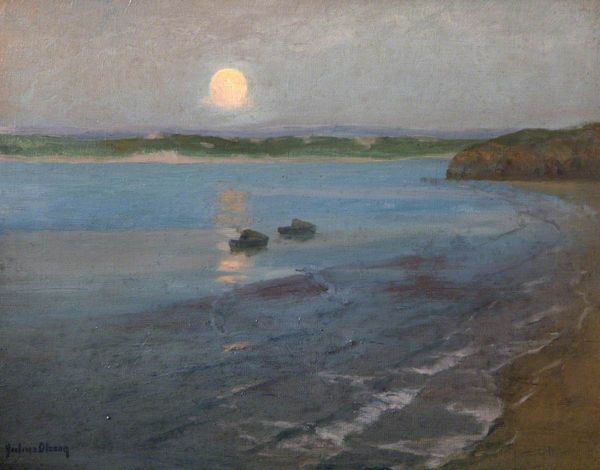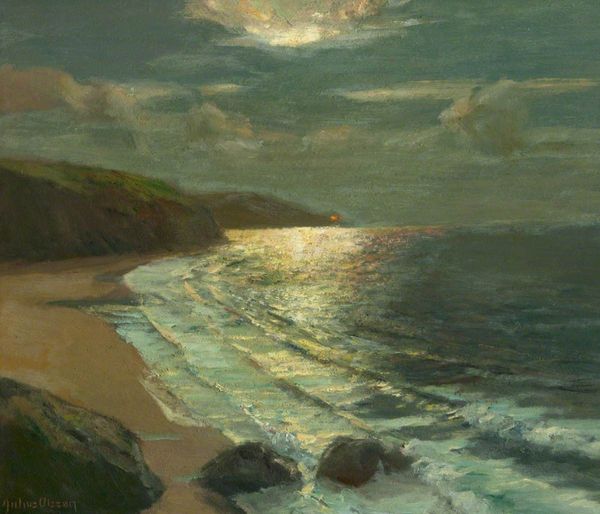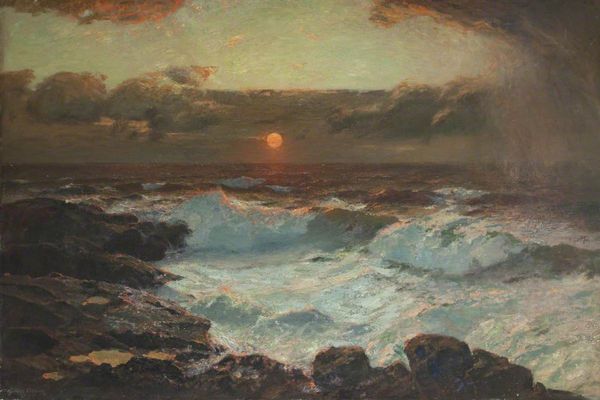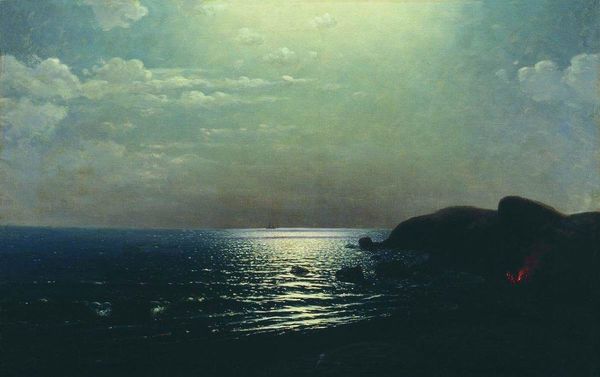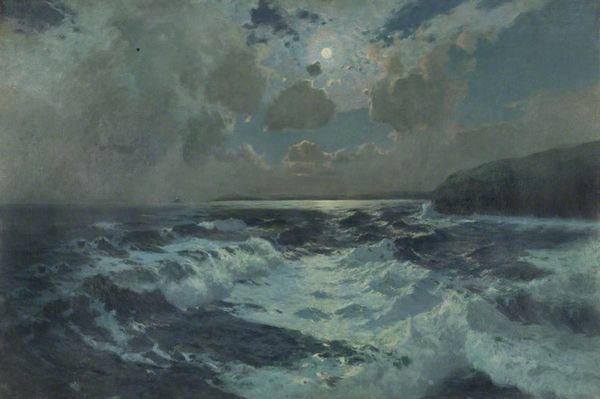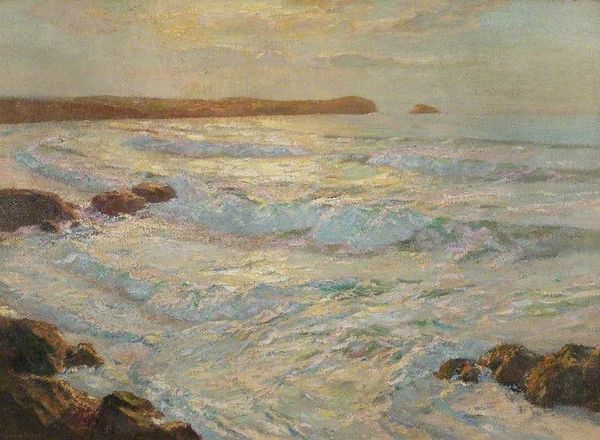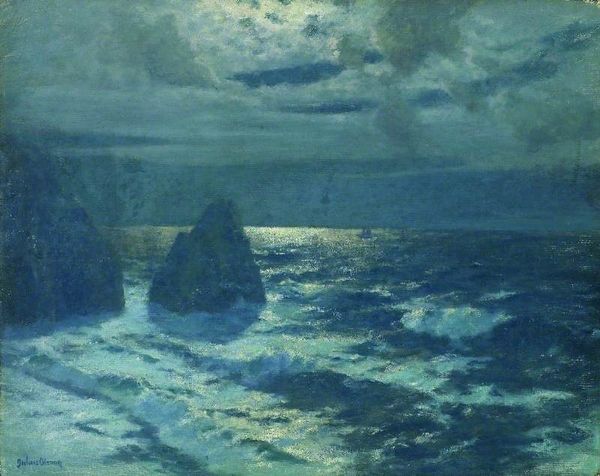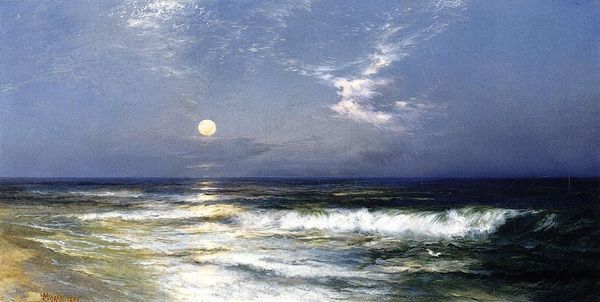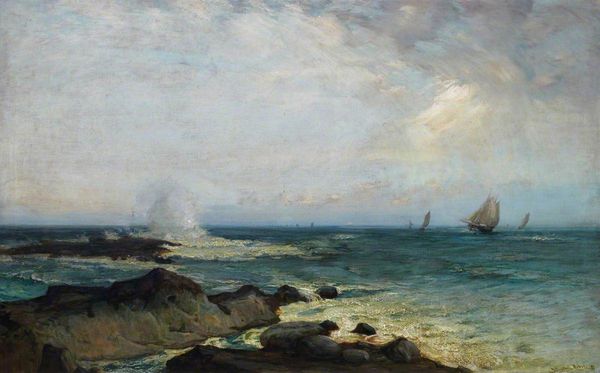
plein-air, oil-paint
#
sky
#
impressionism
#
plein-air
#
oil-paint
#
landscape
#
impressionist landscape
#
oil painting
#
ocean
#
romanticism
#
seascape
#
water
#
sea
Copyright: Public domain
Editor: Here we have Albert Julius Olsson's *Rising Moon, St Ives Bay, Cornwall*, done in oil paint. It feels almost theatrical, the way the moonlight dramatically spotlights the water. I’m curious, what stands out to you when you look at this piece? Curator: Well, I see a perfect example of late 19th-century romanticism evolving within a growing art market eager for landscapes. Olsson captures the sublime, yes, but it’s a *domesticated* sublime. The painting isn’t just about the power of nature; it's about a view, a consumable experience. Editor: Consumable how? Curator: The location, St. Ives, was becoming a popular artist colony and tourist destination. Paintings like these fed into the desire to own a piece of that experience. Also consider how galleries shaped art during that period. Editor: Right, so exhibiting meant appealing to specific tastes. Curator: Exactly. This blends a traditionally "acceptable" style with just enough modernity. Impressionism made painting “en plein air” accessible and a visual phenomenon. It gives us a certain romantic vista. But look closer at how the brushstrokes give depth, while other details have no hard definition and lack an overall “message”. The art-buying public craved accessible beauty. Did the social pressures placed on Olsson have an effect? Undoubtedly. Editor: So it’s almost a painting *about* painting, or selling, landscapes, not just *of* one. Curator: Precisely! And reflecting upon that dynamic gives us a much deeper appreciation. Editor: That's a really insightful way to look at it; I will always see it in light of consumerism now! Curator: Glad to shed light, it’s what makes this image ever more precious to me!
Comments
No comments
Be the first to comment and join the conversation on the ultimate creative platform.
